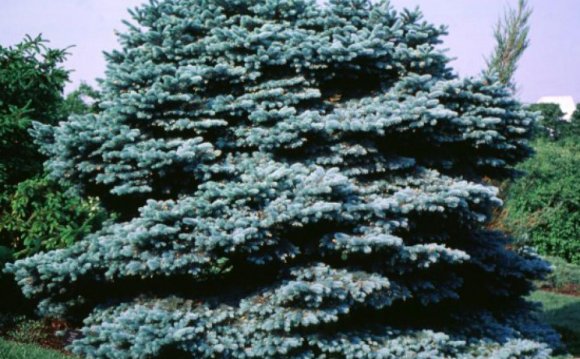
Living Florida-Friendly begins with selecting the right plant for the right place. If you select suitable plants for your landscape and care for them according to Florida-Friendly Landscaping™ principles, they will likely thrive.
Florida is a diverse state which includes a variety of soil types, temperature ranges, and rainfall patterns that differ dramatically from region to region. A plant that thrives in a friend's yard on the coast may freeze in your yard just a few miles inland. Different conditions often exist in the same home landscape. The front yard may be high and dry, while the backyard may be poorly drained and soggy.
Walk around your property, noting conditions that make your yard unique. Does your site demand plants that are tolerant of the cold, wind, full sun, shade drought, occasional flooding, or salt spray? Do you know your soil pH and nutrient content? Don't forget to take into account where your septic system, power lines, and underground utilities are located. The following checklists will guide you through some important considerations you should take into account when designing a landscaped area.
1st: Determine Your Needs for an Area.
- Play area for children
- Veg./herb/fruit garden
- Screen home from road or neighbors
- Wildlife habitat/butterfly garden
- Water garden/aquascape
- Sitting garden
- Area for entertaining
- Pet area
- Storage area
- Pool, spa, hot tub
- Outdoor barbeque area
- Showcase the home
2nd: Determine Maintenance Level
Time needed for mowing, pruning, and weeding as well as equirements for water, fertilizers and pesticides.
3rd: Determine the Site Conditions in Your Yard
Time needed for mowing, pruning, and weeding as well as equirements for water, fertilizers, and pesticides.
- North FL
- South FL
- Central FL
- Well-Drained Soil
- Poorly Drained Soil
- Compacted Soil
- Alkaline Soil
- Acidic Soil
- Costal Soil
- Sandy
- Marl
- Clay
- Full Shade
- Partly Shaded
Your UF/IFAS County Extension office can provide you information on how to collect a soil sample for a pH, soluble salts, or complete analysis test. For more information on pH see:
.
4th: Map Your Yard
Creating a low-impact, Florida-Friendly Landscape can be fun and rewarding. But where do you start? If you need help with the layout, viisit
5th: Select Landscape Material
Once you know your site conditions and have decided how you will use your yard, you are ready to begin selecting plants. Now that you have determined the basic layout, the fun part begins. When choosing plants, consider the limitations of your site, maintenance requirements, and wildlife value. A Florida-Friendly Plant List has been established to help you select the best plant choices for your landscape. Visit
Florida-Friendly Landscapes: Right Plant, Right Place
- Reduce the need for water, fertilizer, pesticides, and pruning by using low-maintenance plants suited to the conditions in your yard.
- Group plants according to their water needs (e.g., group drought-tolerant plants with low-water needs apart from lawn areas).
- Determine how much grass you need for children, pets, recreation, swales, right-of-way areas, etc. Use low-maintenance ground covers, shrubs, mulch, or other porous surfaces where possible.
- Save energy by using trees and shrubs to shade the air conditioner compressor and eastern and western walls of your home.
- In North Florida, use deciduous trees or shrubs on southern exposures to allow sun to passively heat your home in the winter.
- Help stop the spread of invasive exotic plants by removing them from your yard (for example, Brazilian pepper, melaleuca, Australian pine, and Chinese tallow). See for more details.
- Reduce yard waste by choosing plants that will not require frequent pruning when they reach maturity.
- Preserve native plants, especially trees, when building on a new site. Maintain a protective "do not disturb" barrier under the dripline of trees.
Top 5 Common Mistakes in Landscape Plantings
Adapted from "Landscape Design" by Greg Davis, Ph.D.
| Mistakes | Solutions |
| Over-planting: Small trees and shrubs are often planted too close together to get a "full" look. The result several years later is a crowded landscape. Plants must be removed or drastically pruned to reduce competition. | Resist the temptation to have an "instant landscape." Know the mature size of plants and give them room - and time - to grow. |
| Lawn areas are cluttered with trees and shrubs. Plants scattered throughout the lawn appear disorganized. They also create maintenance problems in terms of mowing, raking, and giving plants the amount of water they need. | Group shrubs and trees in mulched plant beds bordering the lawn. |
| Shrubs around the home are too tall. When plants grow too tall they cover windows and no longer enhance the home's appearance. We usually try to compensate for this "misplanting" by shearing to control the plant size. This constant shearing weakens and disfigures shrubs. It also creates extra work and yard wastes. | Select foundation plants with an ultimate (mature) size that fits their location. Instead of shearing shrubs, selectively clip stray shoots to keep the plant neat and full. |
| Plants are planted too close to the house. Plants too close to the house have an unattractive "cramped" look. They also create a maintenance nightmare when it's time to repair or paint the house. | Foundation or corner shrubs should be planted half their mature width plus one foot away from the wall. Therefore, a shrub that will grow to be five feet wide should be planted 3 1/2 (2 1/2 + 1) feet away from the house. |
| Bright colors are scattered throughout the yard. Brightly colored foliage, flowers, or fruit attract attention. When brilliant color is scattered along the foundation or elsewhere around the yard, it confuses and may overwhelm the viewer. |















